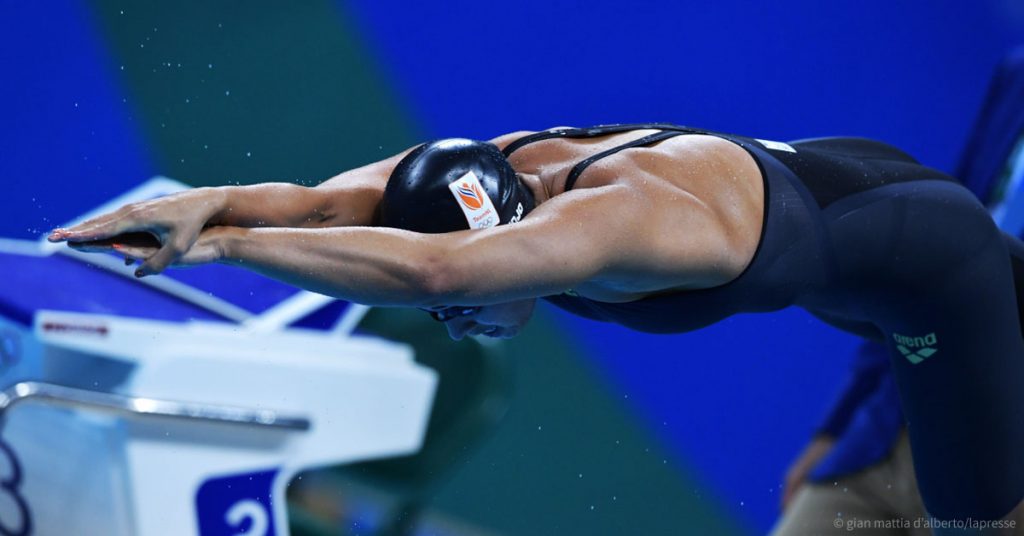“Posture influences strength, injury risk, and performance. Learn why swimmers have poor posture and even the term “Swimmers Posture” named after them.”
A rounded spine and forward head posture are common on pool decks. Everyone in the swimming community knows a swimmer (or many swimmers) with a forward head, rounded spine, raised shoulders, hands facing backwards, and hips positioned forward. Often this posture is not discussed or even joked about.
“Bobby has the worst posture, hahaha.”
Although this position may provide a quick chuckle, it causes big problems in and out of the pool. Here are 3 main problems with swimmer’s poor posture.
1. INJURY RISK
If a swimmer stands, sits, or moves with poor posture, then some structures are placed under more stress. More stress upon an area increases the load on the tissue and risk of injury. Many swimmers have great posture and get injured; many swimmers have horrible posture and don’t get injured. Many factors are involved with pain, but the majority of sporting injuries are related to an overloaded tissue. An overload takes a long time and the small additional stress of poor posture increases over a long period of time.
2. STROKE MECHANICS
Many of you are reading this for swimming performance. Luckily, you’re in the right place, as posture plays a huge role in swimming mechanics and performance. If a swimmer has poor posture, their streamline will be impaired. All swimmers know being streamlined is HUGE. If you are not streamlined, you’ll create more drag in the water and have to work harder against the water to move forward! Poor posture is particularly problematic to the catch in freestyle and fly and the pull in breaststroke. But this posture can also inhibit other aspects of the stroke, most notably the ability to flex the shoulder (raising the arm toward the sky). If you are unable to keep your head inline of your spine, every breath (in any stroke) will create extra drag as it leads the body through the water.
3. STRENGTH
Poor posturing also impairs strength. The research can’t determine the amount of strength impairment has to do with poor posture, but let’s explain how poor posture makes you weaker.
Every muscle has an optimal resting position. In this position, it contracts the strongest. Each joint has muscles around it on both sides. If a joint has tight muscles on one side, it will elongate the muscles on the other side. Both of these muscles are pulled out of their optimal position and become weaker. The degree of these weaknesses may be small, but adds up overtime. Also, posture should not be the primary goal of any strength program, but when we consider the rates of dryland injury repeatedly shown in the literature, posture should not be ignored.
CONCLUSION
These 3 problems with swimmer’s poor posture aren’t the only problems with poor posture. However, these 3 areas create big problems, for health and more importantly to many swimmers, performance. Now, some poor posturing could be helpful for swimmers. For example, a rounded upper back could assist curling into a ball for flip turns and an elevated shoulder may assist a high elbow catch. We definitely should not take the view that everyone who presents with swimmer’s posture must be fixed. What we should be worried about is the swimmer who can’t is consistently in poor posture, potentially becoming stuck in this hazardous and impaired position.
